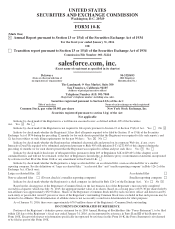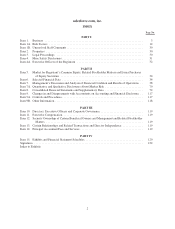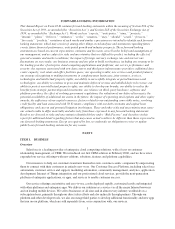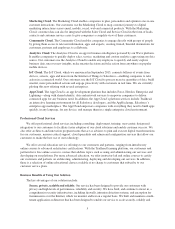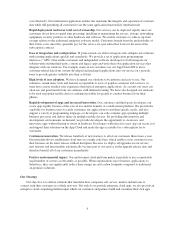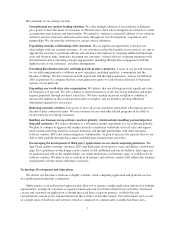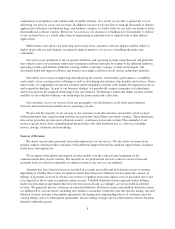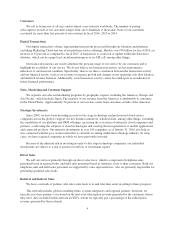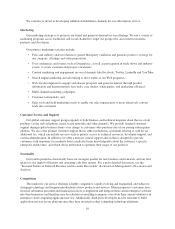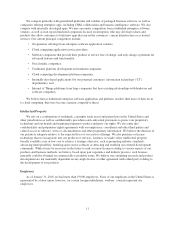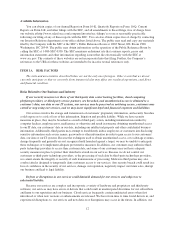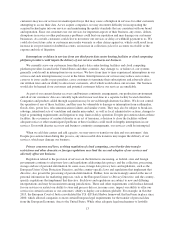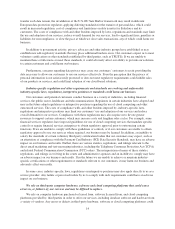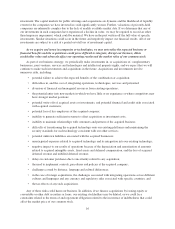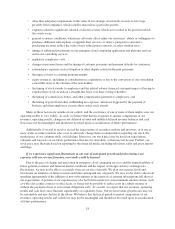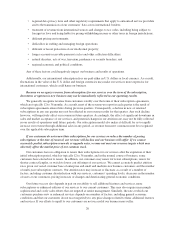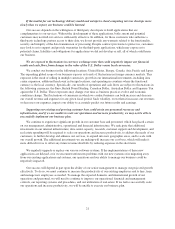Salesforce.com 2016 Annual Report Download - page 18
Download and view the complete annual report
Please find page 18 of the 2016 Salesforce.com annual report below. You can navigate through the pages in the report by either clicking on the pages listed below, or by using the keyword search tool below to find specific information within the annual report.We compete primarily with generalized platforms and vendors of packaged business software, as well as
companies offering enterprise apps, including CRM, collaboration and business intelligence software. We also
compete with internally developed apps. We may encounter competition from established enterprise software
vendors, as well as start-up and midsized companies focused on disruption, who may develop toolsets and
products that allow customers to build new apps that run on the customers’ current infrastructure or as hosted
services. Our current principal competitors include:
• On-premises offerings from enterprise software application vendors;
• Cloud computing application service providers;
• Software companies that provide their product or service free of charge, and only charge a premium for
advanced features and functionality;
• Social media companies;
• Traditional platform development environment companies;
• Cloud computing development platform companies;
• Internally developed applications (by our potential customers’ information technology (“IT”)
departments); and
• Internet of Things platforms from large companies that have existing relationships with hardware and
software companies.
We believe that as traditional enterprise software application and platform vendors shift more of their focus
to cloud computing, they may become a greater competitive threat.
Intellectual Property
We rely on a combination of trademark, copyright, trade secret and patent laws in the United States and
other jurisdictions as well as confidentiality procedures and contractual provisions to protect our proprietary
technology and our brands and maintain programs to protect and grow our rights. We also enter into
confidentiality and proprietary rights agreements with our employees, consultants and other third parties and
control access to software, services, documentation and other proprietary information. We believe the duration of
our patents is adequate relative to the expected lives of our service offerings. We also purchase or license
technology that we incorporate into our products or services. At times, we make select intellectual property
broadly available at no or low cost to achieve a strategic objective, such as promoting industry standards,
advancing interoperability, fostering open source software or attracting and enabling our external development
community. While it may be necessary in the future to seek or renew licenses relating to various aspects of our
products and business methods, we believe, based upon past experience and industry practice, such licenses
generally could be obtained on commercially reasonable terms. We believe our continuing research and product
development are not materially dependent on any single license or other agreement with a third party relating to
the development of our products.
Employees
As of January 31, 2016, we had more than 19,000 employees. None of our employees in the United States is
represented by a labor union, however, for certain foreign subsidiaries, workers’ councils represent our
employees.
11


